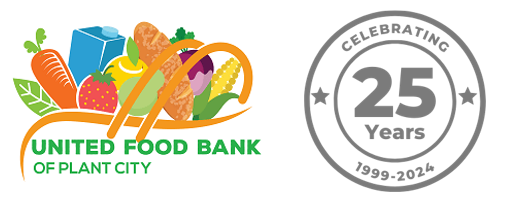Understanding the Three Types of Food Insecurity: A Closer Look at the Challenges Faced by Many
By: Mary Heysek, President/ CEO United Food Bank of Plant City
Introduction
Food insecurity is a complex and widespread issue and affects millions of people around the world and in our community of East Hillsborough County and the eleven (11) communities that the United Food Bank serves – Plant City, Dover, Thonotosassa, Seffner, Riverview, Lithia, Historic Beallsville, Valrico, and Brandon. While the term “food insecurity” is often used broadly, it encompasses various situations and experiences that individuals and communities’ encounter. In this blog, we will delve into the three main types of food insecurity, shedding light on their distinct challenges and impacts on those facing them.
1. Chronic Food Insecurity
Chronic Food insecurity is charactered by ongoing, long-term struggles in accessing sufficient and nutritious food to meet basic dietary needs. Individuals experiencing chronic food insecurity often face persistent poverty, limited economic opportunities, and insufficient access to resources. Key features of chronic food insecurity include:
a. Regular Hunger. People dealing which chronic food insecurity frequently experience hunger due to inadequate access to food on a consistent basis. This can result in nutrient deficiencies and long-term health issues.
b. Coping Mechanisms. To cope with limited resources, people may resort to strategies like reducing portion sizes, skipping meals, or relying on cheaper, calorie-dense but nutritionally poor foods.
c. Impacts on Health and Well-being. Chronic food insecurity has severe consequences for health and well-being, leading to malnutrition, weakened immune systems, and increased susceptibility to illnesses.
2.Transient Food Insecurity
Transient food insecurity is also known as situational or episodic food insecurity, and it is temporary lack of access to sufficient food due to specific events or circumstances. Because of high inflation and high cost of food and household goods, the United Food Bank has an increase in “new clients” who have never been to a food bank or who have not been to a food bank in a long time. Unlike chronic food insecurity, transient food insecurity is often triggered by short-term factors, such as job loss, unexpected medical expenses, or natural disasters. Key features of transient food insecurity include:
a. Sudden Onset: Transient food insecurity arises unexpectly, usually as a result of an unforeseen event or crisis that disrupts household stability and resources.
b. Unpredictability: Individuals experiencing transient food insecurity may have previously been food-secure but find themselves facing temporary hardships that affect their ability to afford food.
c. Need for Immediate Support: Those facing transient food insecurity require short-term assistance to bridge the gap during the crisis period until they can regain stability.
3. Seasonal Food Insecurity
Seasonal food insecurity occurs when food access fluctuates due to seasonal variations in agricultural productivity, employment opportunities, or weather conditions. This type of food insecurity is often observed in rural areas where agriculture plays a significant role in the local economy. Key features of seasonal food insecurity include:
a. Harvest and Lean Seasons: Seasonal fluctuations in agricultural production led to periods of abundance (harvest season) and scarcity (lean season) for food availability.
b. Employment Instability: Agricultural workers may experience job insecurity during the off-season when opportunities for employment are limited.
c. Regional and Geographic Variation: Seasonal food insecurity varies based on geographic location, climate, and agricultural practices in different regions.
Conclusion
Understanding the three types of food insecurity helps us grasp the complexities of this critical issue affecting millions worldwide. Chronic food insecurity plagues individuals facing persistent poverty and limited resources, while transient food insecurity arises from unexpected events and requires short -term support. Seasonal food insecurity is closely tied to agricultural cycles and regional variations. Addressing each type of food insecurity requires tailored strategies and comprehensive approaches that address the underlying causes of poverty, improve access to nutritious food, and create more resilient communities. By working together, we can build a world, a community where food security becomes a reality for all, ensuring that no one goes to bed hungry.
United Food Bank & Services of Plant City
Mailing Address:
702 E. Alsobrook
Plant City, FL 33563
(813) 764-0625

